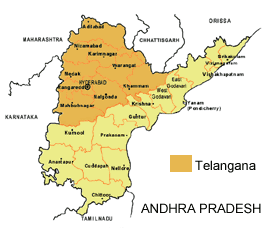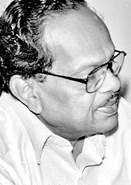The recent terror attacks in Mumbai, a city that has been subject to bomb blasts, riots and underground violence for years now, mark a qualitative difference in the scale, magnitude and the modus operandi of the operations. If bomb blasts in unsuspecting civilian areas, particularly crowded ones – suburban trains, bus stations, market places was the order of the previous attacks, this one featured a full scale urban guerilla attack, schemed and planned to precision and to invite maximum attention and exposure.
The targets chosen by the attackers revealed much about their inclinations and ideology. The symbolism of Chatrapati Sivaji Terminus – a hub for nearly every working Mumbaikar (Mumbai resident) is apparent; CST represents secular and working India, a point where people of all classes and sections confer for their daily travel purposes. The choice of the Taj, Trident-Oberoi hotels were made to ensure that foreign tourists from the United States and Britain could be targeted, while the attack in Nariman House was on Israeli citizens and Jews. Other structures of everyday Mumbai and India – Metro Cinema, Cama Hospital were targeted to make the point that India is as much the hated enemy and part of the axis that features the US, Britain and Israel.
That these attacks were carried out by terrorists acting in the name of radical Islam is very clear, from the inputs and findings of the security agencies engaged in investigating the attacks. These terrorists were brainwashed and fed on propaganda based on millenarian ideologies and religious fundamentalism which feeds on discontent in the Islamic community about the happenings in Palestine, Kashmir and other parts of the world. The viciousness of the attacks and the randomness of the murders point out to how dangerous is the propaganda that has been fed into these attackers. From all indications, most of these attackers seem to have come from Pakistan, trained by the fanaticist Lashkar-e-Toiba, it is speculated. The co-ordination and material help came from erstwhile or present state actors in the security set-up of Pakistan, it is suggested. The terrorists had used the sea route from Karachi, by hijacking a mother ship in the waters and using rubber dingies to reach Mumbai's shore, before branching off to various targets. That India's coastal security is lax is for all to see, but the security agencies' excuse is that the coastline is too large to be manned and made non-porous. We shall get to the security and policing part later.
After indiscriminate firing at CST and other public places, which killed among other civilians, three prominent police officers, the scene of action was at the hotels, where hostages were held captive by the terrorists. This in turn was greeted by a security response intent upon neutralising the terrorists and regaining control over the hotels. Admittedly, the security forces – police and later special commandos of the National Security Guard and Marine commandos were left with little choice with the scrutiny that were subjected to and they bravely went about extinguishing the threat by killing the terrorists and flushing hostages as many as were possible. But the question remains if all the steps in the counter-terrorism manual for hostage situations were followed. The terrorists took a number of people hostage in the hotels, prominently foreign tourists with British, American and Israeli nationalities and most definitely that hostage taking was intended for negotiation. The ideal strategy for the counter-terrorist forces should have been to exhaust the terrorists while engaging in negotiation and keeping avenues open for safe exit of many of the hostages, but the way things panned out, the losses were heavy as more than 100 tourists (the count is still on) died in the process even as most of the terrorists were killed in the special operations.
Why was it that the security forces had to go on the offensive from the word “go”? Was it because the administrative structure – the Maharashtra government and the Indian central government, both led by the Congress– felt that anything less than decisive action would have been a sign of weakness, an allegation about the ruling parties that has been used time and again by the rightist opposition led by the Bharatiya Janata Party? As events pan out, we would certainly come to know about this. Having said that, the unremitting hostility and fidayeen nature of the attack perhaps was part of the terrorists' gameplan. It could have been part of their calculus to engage in a protracted siege, and that the killing of their hostages would attract maximum attention, an exposure that would force the Indian public to demand immediate retribution and accept strict laws in order to minimise the risks of yet another catastrophic terrorist attack. The terrorists' game plan therefore was to force the Indian government to adopt hard-line measures, and draconian laws targeted at cutting down of civil liberties and public rights, which would invariably have focused on the minority community and revealed the fissures between them and the state and at worst, leading to increased communal violence.
That leads us to the response of the government. Prime Minister Manmohan Singh pointed the needle of suspicion to Pakistan indirectly, having been convinced of the latent evidence. He also talked about stricter laws and penalties, paving the way for what the terrorists exactly had in mind. Surely, this must be playing into the hands and the intent of those who have managed this terrible saga. We all know where draconian laws such as POTA and TADA led to – repression, unfair targeting and miscarriage of justice. These laws sowed more seeds of discontent than ever before and gave a lifeline to the growth of fundamentalist and radical ideologies that mirror the terrorists' intentions and beliefs, within India itself. In other words, the government would be scoring an own goal by doing exactly what these terrorists wanted. The question then to be asked is what is to be done to prevent such attacks again?
It leads us to two aspects – strengthening the security, policing and intelligence infrastructure that can predict and nip such threats in the bud. And the other focusing on destroying the seeds that lead to the sprouting of the millenarian ideologies that are represented by such fundamentalist groups. One may ask as to how much the levers the Indian government can have against an international menace that persists in Pakistan and in west Asia under the umbrella denominations of Al Qaeda, the Lashkar-e-Toiba, the Jaish-e-Mohammad and other myriad groups.
Pakistan is also bearing the brunt of the regular terrorist violence (the recent Marriot Hotel attacks in Karachi were very much the precursor to the incidents in Mumbai), which was the consequence of years of patronage to radical Islamic and fundamentalist sections by the Pakistani ruling classes and establishment. There is an elected government in Pakistan today, after perhaps the most free and fair elections in the country after decades. There is greater pressure from the international community which sees Pakistan as the wellspring of terrorist violence with the presence of fundamentalist groups in north-west Pakistan (in Waziristan) and the sprinkling of terror camps all across the country, which were responsible for many a catastrophic event such as the Lal Masjid incident, the assassination of Benazir Bhutto and most recently, the Marriot bombings. There is great hatred for these groups among the Pakistani public themselves, who have become tired of the years of patronage provided by the ruling establishment under the control of the Army and that explains the resounding defeat of Pervez Musharraf's supporters in the recent elections.
It is a ripe enough moment for the Indian government to engage with the democratically elected government in Pakistan, with added impetus from the international community to purge the radical, fundamentalist and crazy elements that are entrenched in its security apparatus – in the ISI and in the Army. The Indian government can now force the new Pakistani government to act immediately and tough against the radical outfits such as the LeT and JeM which operate under various names impudently, as the gaze of the international eye is fixed firmly upon Pakistan.
At the same time, domestically, Indians should repudiate the very basis that forms the ideological thrust of the radical jihadis – that the Indian state and its citizens are the enemy of people of their basic faith and that the Indian state is an appendage of the imperial world. The re-affirming of the secular nature of India's democracy and the strengthening of the edifices of welfare democracy will serve as a strong answer to any fundamentalist questioning of the partiality of the Indian state. The solidarity of the Indian state toward anti-imperialism will break the backbone of any reasoning that ties up the Indian state within the imperial axis. That means that the Indian state should repudiate any intention that serves imperial interests in south, west and central Asia; meaning that the occupation of Iraq and Palestine should be unequivocally condemned and India should desist from acting for imperial interests in Afghanistan where discontent against NATO bombing and American actions is very high.
As for the short-term and immediate ways of handling the menace, there are enough ways of intercepting and quelling plans for sabotage and terrorism. From surveillance of financial transactions, creation of a central co-ordination body against terrorism, extensive databases about sleeper cells of terrorist outfits operating in the country, effective penetration and neutralisation techniques, better border security, there are quite a few security avenues available for such action.
The people of Mumbai in the meantime have had enough. Bomb blasts in 1993 following religious riots, a long spell of underground violence which took years for the police to control and eradicate, blasts in the Ghatkopar suburb and more blasts near the Gateway of India in 2003, the serial bomb blasts in trains in 2006 and now these attacks in November 2008; all of them have been conducted to destroy the spine of India's most populous city. More than any other, these attacks stand out. The people of Mumbai showed resilience in returning back to their quotidian lives, rejecting attempts to foment communal divides and more violence in the past. But this time around, the wounds have scarred them enough to make them fear about the unknown. Mumbai was not back to normality after the sieges.
Traffic was still loose on the normally busy streets and many offices were still shut. Anger is slowly engulfing the public, who have chosen to blame the broad polity for their travails. There is also enough anger against Pakistan for being the source of this recent menace and it is clear that any lowering of commitment toward ensuring justice for those affected by these incidents by both the Indian and Pakistani governments will not go down passively with the people of the city.
Regional exclusivist and chauvinist groups such as the MNS and the Shiv Sena have already held Mumbai to ransom with violent acts against north Indian citizens of the city. The ruling parties have been no better in fanning the waves of chauvinism. That security personnel drawn from all parts of India led from the front in sanitising the city's terror affected locations from marauding terrorists, is a slap in the face of these chauvinists. The popular sentiment among the citizens of Mumbai is a sense of gratitude for the bravery of the security persons who risked their lives in ending the sieges and a sense of angst and anger against the failed right wing politics in the city. There would be no non-chalant return to the quotidian for the average Mumbaikar anymore, but the determination remains to dispel any attempts to destroy the fabric of this remarkable “Maximum City”. One sincerely hopes that this continues to remain the case, for that would be a fitting reply to those terrorists and their ideology of fanaticism.





